An infinitely long uniform line charge distribution of charge per unit length λ lies parallel to the y-axis in the y-z plane at √3/2a see figure. If the magnitude of the flux of the electric field through the rectangular surface ABCD lying in the x-y plane with its centre at the origin is λL/nε0 ε0=permittivity of free space then the value of n is:
Flux from total cylindrical surface angle = 2 π= Qin/ε0Flux from cylindrical surface AB = flux from the given surface
Related Solutions
An infinity long uniform line charge distribution of charge per unit length lies parallel to the y-axis in the plane at a(see figure). If the magnitude of the flux of the electric field through the rectangular surface ABCD lying in the plane with its centre at the origin is ( permittivity of free space), then the value of n is
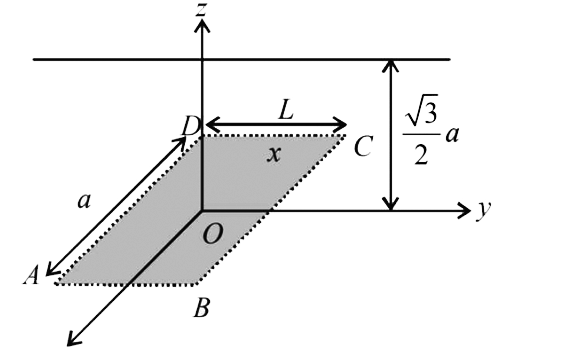 View Solution
View SolutionAn infinity long uniform line charge distribution of charge per unit length lambda lies parallel to the y-axis in the y-z plane at z=sqrt3/2 a(see figure). If the magnitude of the flux of the electric field through the rectangular surface ABCD lying in the x-y plane with its centre at the origin is (lambdaL)/(nepsilon_0) ( epsilon_0= permittivity of free space), then the value of n is
View SolutionA point charge q is placed at origin. Find the flux of electric,produced due to this charge, through a circle of radius R lying in y-z plane. The centre of the circle lies at (x,0).
View SolutionA point charge q is placed at origin. Find the flux of electric,produced due to this charge, through a circle of radius R lying in y-z plane. The centre of the circle lies at (x,0).
View SolutionElectric field intensity in a region of space is given by N/C. Consider a plane surface of area 10 units parallel to Y-Z plane and calculate electric flux linked through this surface.
View SolutionFind the electric field vector at P (a,a,a) due to three infinitely long lines of charges along the x-, y- and z-axis, respectively. The charge density i.e. charge per unit length of each wire is (lamba) ,
View SolutionFind the electric field vector at P (a,a,a) due to three infinitely long lines of charges along the x-, y- and z-axis, respectively. The charge density i.e. charge per unit length of each wire is ,
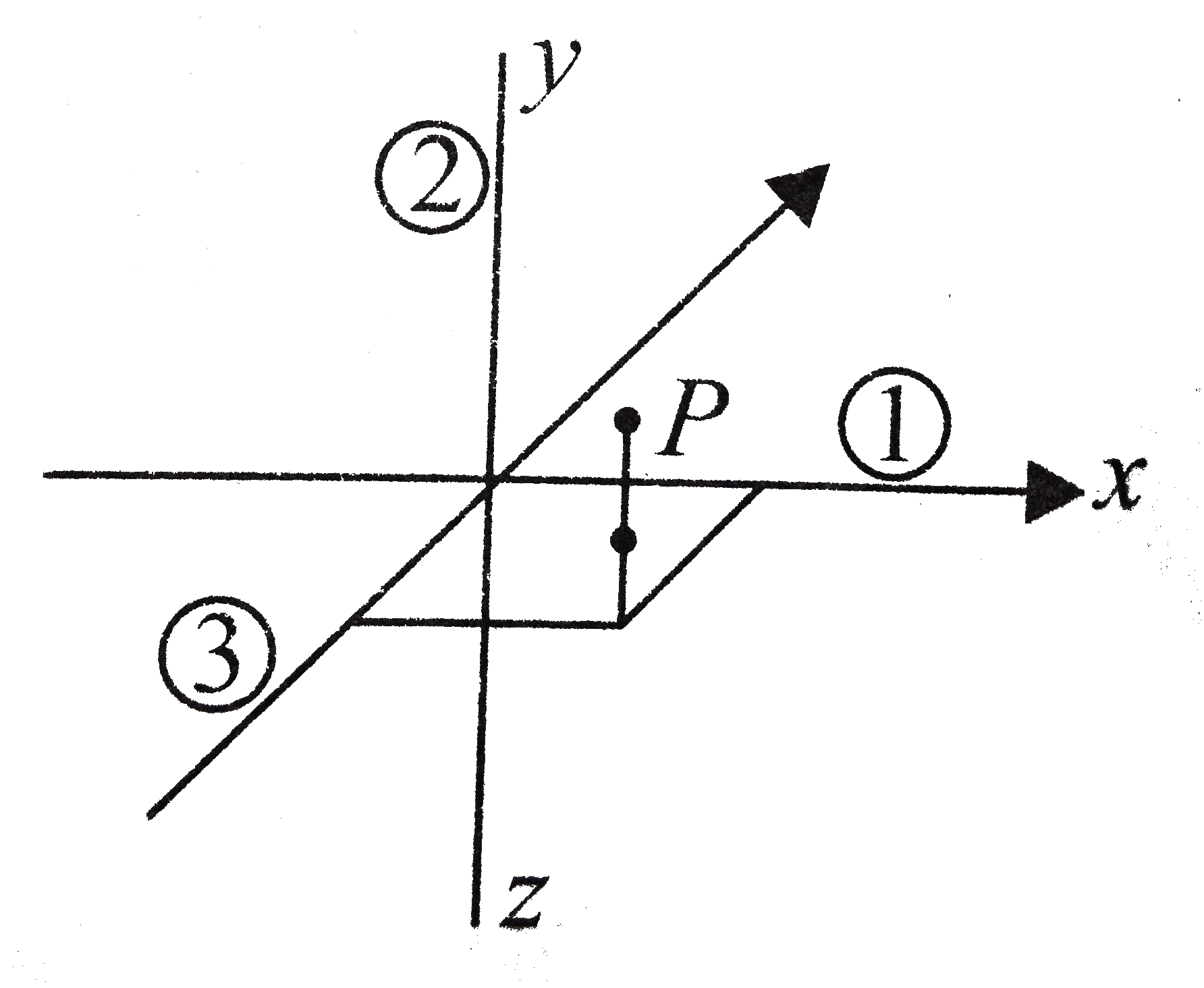 View Solution
View Solutionचित्रानुसार एक अनन्त लम्बाई के एकसमान आवेशित सीघे तार, जिसका रेखिक आवेश घनत्व है, को y-z तल में Y-अक्ष के समान्तर दूरी पर रखा गया है यदि इसके विद्युत क्षेत्र का, x-y तल में स्थित मूलबिन्दु पर केन्द्रिक ABCD आयताकार सतह से होकर जाने वाला फ्लक्स है तो का मान है
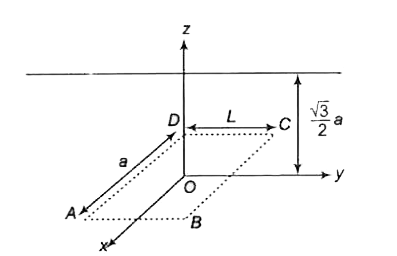 View Solution
View SolutionTwo positive and two negative charges are kept in x-y plane in free space as shown in the figure. The magnitude of electric field due to the system of charges at a point P(0, y) will be (y > > d)
View SolutionTwo positive and two negative charges are kept in x-y plane in free space as shown in the figure. The magnitude of electric field due to the system of charges at a point P(0, y) will be (y > > d)
View SolutionFind out the surface charge density at the intersection of point x=3 m plane and x-axis, in the region of uniform line charge of 8 nC/m lying along the z-axis in free space.
View Solution3 infinite long charged sheets of charge densities are placed parallel to x - y plane at z = 0 , z = a and z = 3 a . Electric field at point P is
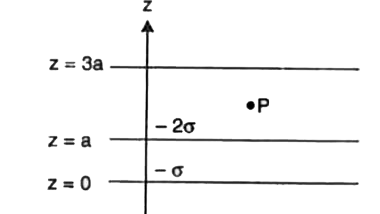 View Solution
View SolutionIf the electric field is given by the electric flux through a surface of area 20 unit lying in the Y-Z plane will be
View SolutionIf the electric field is given by the electric flux through a surface of area 20 unit lying in the Y-Z plane will be
View SolutionStatement I : Two point charges +Q and -Q are fixed at point A(+a,0,0) and point B(-a,0,0) respectively. Then the magnitude of electric flux due to electric field of either point charges through infinite y-z plane (that is x = 0 plane) is less than magnitude of net electric flux due to electric field of both charges through that plane (x = 0). Statement II : The magnitude of net electric flux through a surface due to a system of point charges is equal to sum of magnitude of electric flux through that surface due to each of the point charge of the system.
View SolutionA circular ring lying in the x-y plane with its centre at the origin carries a uniformly distributed positive charge. The variation of the electric field at the point is correctly represented by the graph is
View SolutionA uniform disc of radius lies in the plane, with its centre at origin. Its moment of inertia about z-axis is equal to its moment of inertia about line . The value of will be.
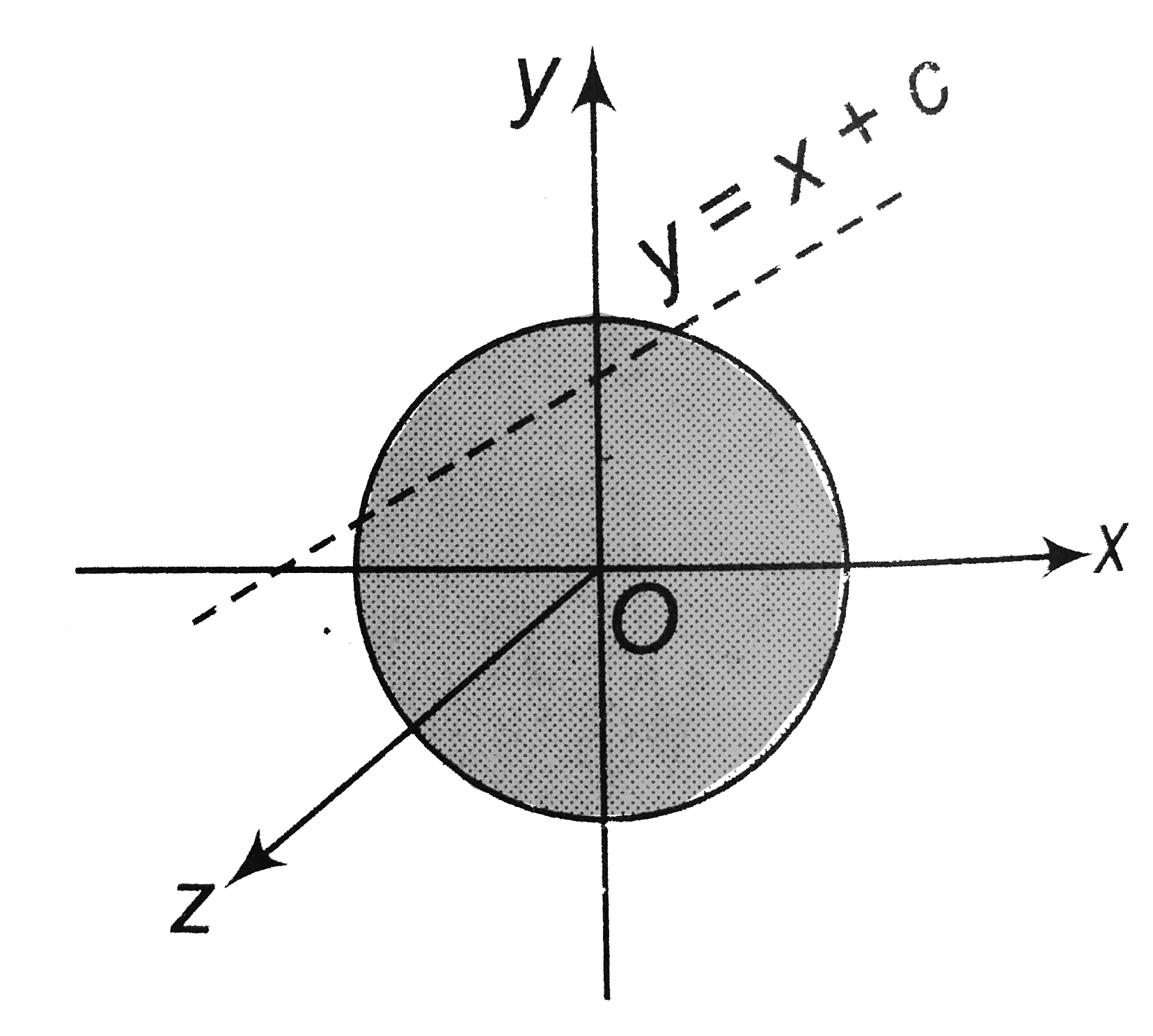 .View Solution
.View SolutionA uniform disc of radius R lies in the x-y plane, with its centre at origin. Its moment of inertia about z-axis is equal to its moment of inertia about line y = x + c . The value of c will be. .
View SolutionObtain the expression of electric field by a plane of infinite size and with uniform charge distribution.
View Solution
